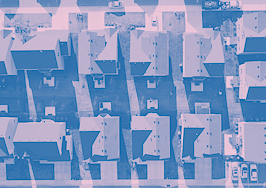Growth in Latino homeownership has exploded over the past decade, but the industry has struggled to meet the needs of this growing population of consumers, real estate leaders said during a panel discussion at the virtual L’attitude 2020 conference Friday.
Growth in this demographic has been driven by two factors, said National Association of Hispanic Real Estate Professionals (NAHREP) CEO Gary Acosta, who spoke alongside Realogy CEO Ryan Schneider and PulteGroup CEO Ryan Marshall.
“Number one is a real passion for homeownership that Latinos tend to have,” Acosta said. “I think that is driven by their commitment to family because family is central to Latino culture.”
“And secondly, is the youth of the Latino population, which is a full decade younger than the general population and 14 years younger than the non-Hispanic white population,” Acosta said. “They are just entering their prime homebuying years.”
Latino buyers accounted for 51 percent of net growth in homeownership from 2009 to 2019. The growth in Latino agents has been strong, but still lags behind that high demand for housing and representation, according to Schneider.
“The growth in agents has actually been pretty good, but it still lags, the Latino share of the agent population,” Schneider said. “Our portfolio, we probably have a little more than the average of the industry and it’s growing, but it’s still below where it needs to be in terms of representing Latino homebuyers and frankly just the wealth creation opportunities of being an agent or being a franchisee.”
The low supply on both the resale and new build side has continued to pinch out prospective homebuyers, but purely from a want standpoint, the industry has to consider a number of factors to satisfy what the Latino buyer is looking for in a home.
As noted by Acosta, the Latino family is typically bigger in size — a recent report from NAHREP found that Latino’s families are 33 percent larger than a typical American family and 46 percent have multi-generational homes. Those cultural differences lead to different preferences in homebuyers.
The low amount of inventory coupled with having more specific needs or wants, has led to a lot of frustration, generally, according to Schneider.
“It’s been a struggle for the real estate industry to meet those different needs, at least in the last couple of years with the really tight inventory situation,” Schneider said.
Homebuilders specifically are taking these needs into consideration, building more multi-generational homes, according to Marshall, as the homebuyer segment of the population continues to grow.
“It’s been a big focus for us, and it really all comes down to our newly developed common managed plan portfolio that really started with the consumer in mind” Marshall said. “The amount of upfront research that we did with consumers, researching and asking how they live, we’ve incorporated that feedback into our current designs and we’ve given the buyer tremendous amount of flexibility.”
“Whether it’s adding the apartment suite, or an additional bedroom, or additional garage, or separate entrance, the additional kitchenette or morning bar area, all of those things give families of all ethnicities great flexibility in evolving to multi-generational living.”
Access to credit also remains an issue for non-white homebuyers, especially following the Great Recession, with tightening lending standards, according to Acosta. Those tightening standards have greatly impacted Latino buyers, Acosta said.
The further the industry gets from 2012, however, those tight standards have begun to ease. Historically low interest rates have also helped in terms of overall affordability and the economic wellbeing of Latinos has risen, Acosta said, but options are still limited.
“There’s still a lack of options in terms of mortgage financing out there,” Acosta said. “Government-sponsored enterprises and the Federal Housing Authority are pretty much the only thing available, so not a lot of balance sheet type lending out there.”
The panelists believe the COVID-19 pandemic will not have any long term negative effect on the rising segment of the Latino homebuyer.
“I think it could have a short-term effect but I think, the data, the trends, the vitality and the overall optimism of the Latino community will show that it will not only survive this pandemic, but it will actually help pull the entire market out of the pandemic as well,” Acosta said.
















